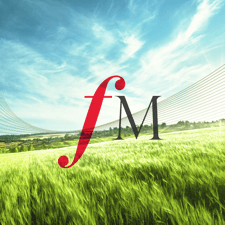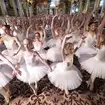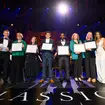20th Century music: where to start
From Elgar's Victorian stiff upper lipped symphonies, through to Stravinsky's spiky tunes, and John Williams' atmospheric film scores, there's a lot of diverse music to discover in the 20th Century. Listen to the best of Serialism, Minimalism, film music, songs, and symphonies of the past 100 years.
20th Century symphonies
As the 20th Century kicked off, composing massive stately symphonies was very much in fashion. Elgar's First Symphony from 1908, complete with dignified melody and march-like bass line gives you an idea, but that's only the tip of the iceberg. Symphonic kings like Mahler and Sibelius were also composing their greatest works - try Mahler's Symphony No. 8 for an impressively grand choral extravaganza, or Sibelius' Symphony No. 3 for a light, folky melody underpinned by hefty orchestral forces.
Serialism
In the increasingly hostile political climate, these idealistic symphonies seemed more than a little out of place. Musicians like Schoenberg, Berg, and Webern reacted against the establishment and stripped music back to its bare bones. By putting each of the 12 notes in the scale in a particular order, they produced angular mathematical music known as Serialism. Brace yourselves for Schoenberg's eerie fluttering melodies of Pierrot Lunaire from 1912, or his Variations for Orchestra.
American music and Minimalism
Once the reign of the massive symphony had been toppled, the door was flung wide open for radical new musical ideas. A group of American composers distilled music down even further and experimented with simple pitches and increasingly complex rhythms, creating beautifully hypnotic music known as Minimalism. Why not explore Philip Glass' Violin Concerto, Steve Reich's amazing Different Trains, or John Adams' Short Ride in a Fast Machine showing the depth of possibilities in Minimalism.
It's not just the Minimalists who reigned supreme in America. Composers like Copland produced the toe-tappin' Rodeo, and the iconic Fanfare for the Common Man, played at every American presidents' inauguration. And who could forget Gershwin, with his rollicking jazz-inspired rhythms and big American tunes. Take a whirlwind trip to Europe in music with An American in Paris to get an idea:
Russian music
Stravinsky shook up the musical establishment with his unconventional style, even causing a near-riot with the premiere of his ground-breaking ballet, The Rite of Spring. Unexpected violent rhythms and controversial musical opinions set Stravinsky apart, but if you're looking for something slightly less in-your-face, you might not be in luck with other Russian masters. Soviet genius Shostakovich's 15 symphonies document a life battling against the Soviet regime, as he fell in and out of favour with the authorities. His opera Lady Macbeth of the Mtsensk District didn't go down well with Stalin, but he quickly regained his popularity with his Symphony No. 5:
Prokofiev, too, was a Russian master, as famous for his ballet music as his brilliant tunes. Why not start with the beautiful Peter and the Wolf, where each character in the music is characterised by a different instrument?
Film and video game music
Shostakovich composed a fair amount of film music, and with the rise of technology and the increased popularity of cinema, it was only a matter of time before movie soundtracks exploded onto the scene. And if you had to pick only one film composer, John Williams is your man, responsible for the soundtracks to the century's blockbuster smash films: E.T., Star Wars, and Superman. His score to Jurassic Park gives us an idea as to what makes him so successful.
With the invention of iconic game, PONG, in 1972, and Tetris in 1984, with its well-known Russian tune, video game music became increasingly popular towards the end of the 20th Century. Like film music, video game music can sound increasingly classical in style, like this piece from Final Fantasy VII:
Choral music
If you're looking for a catchy tune, two choral stars of the 20th Century include John Rutter and Karl Jenkins, whose music is hugely popular with modern choirs. Listen to Jenkins' Adiemus: Songs of Sanctuary from 1995, or Rutter's Gaelic Blessing for two strikingly different examples of late 20th Century choral music. Or, there's Eric Whitacre, an American choral composer famous for his dense cluster chords and rich harmonies. Here's a recording of his Sleep, to give you an idea of what he was up to at the turn of the century.
























